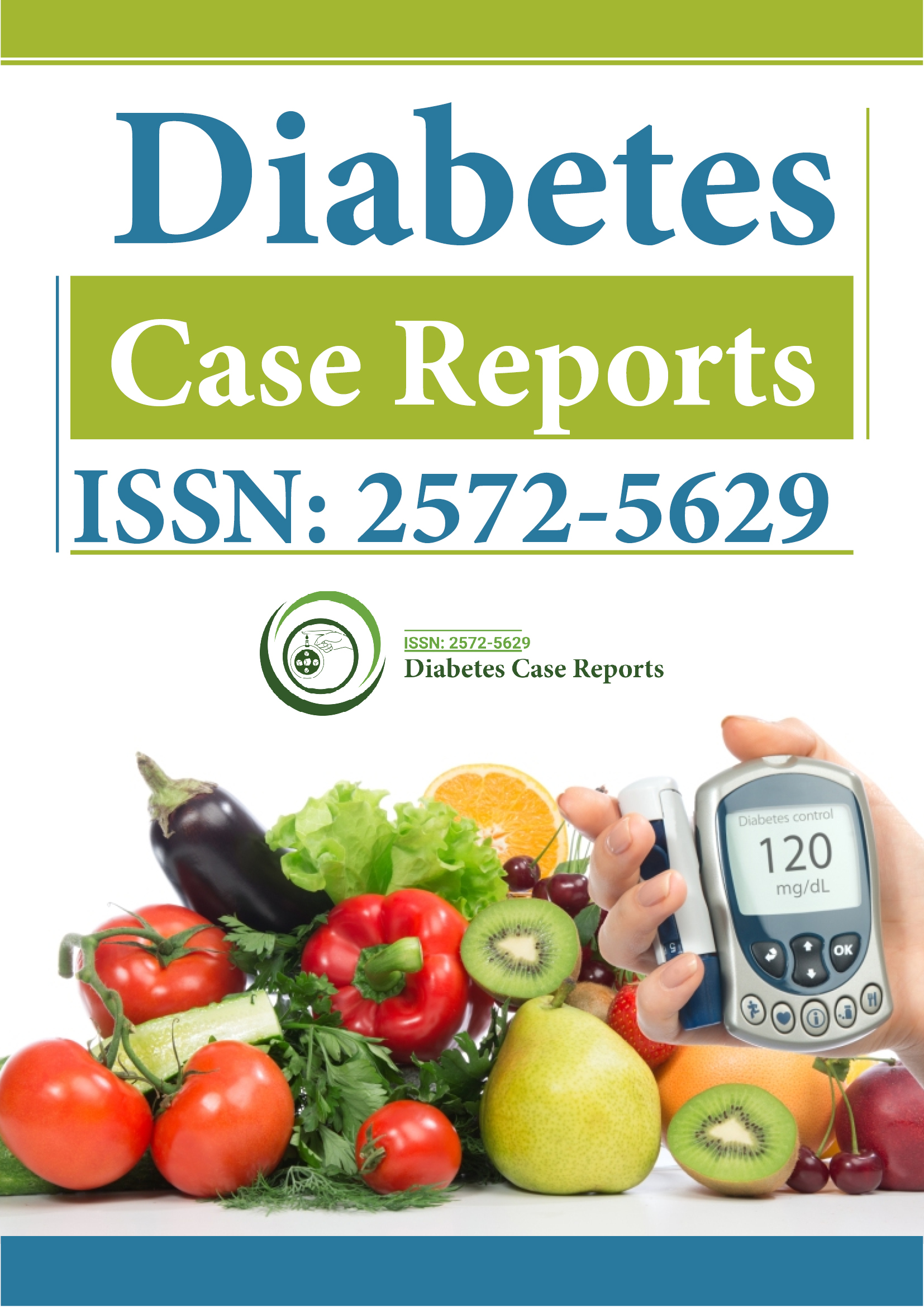Indexed In
- RefSeek
- Hamdard University
- EBSCO A-Z
- Euro Pub
- Google Scholar
Useful Links
Share This Page
Journal Flyer

Open Access Journals
- Agri and Aquaculture
- Biochemistry
- Bioinformatics & Systems Biology
- Business & Management
- Chemistry
- Clinical Sciences
- Engineering
- Food & Nutrition
- General Science
- Genetics & Molecular Biology
- Immunology & Microbiology
- Medical Sciences
- Neuroscience & Psychology
- Nursing & Health Care
- Pharmaceutical Sciences
Perspective - (2023) Volume 8, Issue 1
Importance of Postprandial Glycemic Control in Type 2 Diabetes Management
Peter Midgley*Received: 01-Jan-2023, Manuscript No. DCRS-22-19784; Editor assigned: 04-Jan-2023, Pre QC No. DCRS-22-19784 (PQ); Reviewed: 24-Jan-2023, QC No. DCRS-22-19784; Revised: 01-Feb-2023, Manuscript No. DCRS-22-19784 (R); Published: 09-Feb-2023, DOI: 10.35841/2572-5629.23.8.140
Description
Postprandial glycemic control is a crucial goal for optimal management of type 2 diabetes, but it is often difficult to manage. The gastrointestinal tract plays an important role in regulating postprandial blood glucose in both obesity and diabetes. The importance of glycemic control for optimal management of diabetes is now well established. Glycemic control includes random glycemic, fasting, postprandial, oral glucose tolerance test, or Oral Glucose Tolerance (OGTT) which measures both fasting and oral glucose tolerance, and glycated hemoglobin or HbA1c (8-12 total blood glucose).
Traditionally, the OGTT has been considered the gold standard test for diagnosing diabetes, but Hemoglobin A1C (HbA1c) is increasingly used more often to patients. Fasting blood glucose is widely used for both diagnosis and monitoring of Type 2 diabetes. In contrast, despite the recognition of its critical importance in overall blood glucose levels in Type 2 diabetes and its association as an independent risk factor for macro vascular disease, postprandial blood glucose levels remain has received relatively little attention. Postprandial hyperglycemia is usually the first stage of glucose intolerance. Many doctors had believe that these new guidelines address the significant and increasing the incidence of micro vascular and macro vascular complications caused by poorly controlled diabetes and reduce. However, other clinicians worry that the new target may be unrealistic or even unsafe as it increases the risk of hypoglycemia. In healthy, non-diabetic subjects, 2-hour postprandial blood glucose levels are typically contains 120- 40 mg/dL. Blood glucose levels peak for 1 hour after starting a meal and return to pre-prandial levels within 2 to 3 hours. This postprandial increase or decrease in glucose is mediated by a first-phase insulin response in which large amounts of endogenous insulin are released, typically within 10 minutes, in response to nutrient intake. In people with type 2 diabetes, the first-stage insulin response is greatly reduced or absent, resulting in persistently elevated postprandial blood glucose levels for most of the day. Despite the differences in hypoglycemia reported in these studies, all studies showed that the risk of severe hypoglycemia was significantly lower in her type 2 diabetes than in Type 1 diabetes. One reason for the reduced risk is that in contrast to type 1 diabetes, the deficits in the release of counter-regulatory hormones (glucagon and epinephrine) are less in Type 2 diabetes.
Many factors affect postprandial blood glucose. These include pre-prandial blood glucose, insulin secretion and sensitivity (hepatic and skeletal), and glucagon secretion, but in this review gastrointestinal factors, particularly gastric emptying, intestinal carbohydrate absorption and incretin hormones, gastric inhibitory polypeptides or focuses on Glucose-Dependent Insulinotropic Polypeptide (GIP) and Glucagon-Like Peptide 1 (GLP-1). The importance of the gastrointestinal tract in regulating postprandial blood glucose depends on the state of glucose tolerance. Regardless of whether postprandial glucose is a better predictor of A1C than fasting/pre-prandial glucose, most investigators believe that the best predictor of A1C is the mean composed of fasting/pre-prandial and postprandial glucose blood sugar.
Conclusion
Regulation of gastrointestinal motility (particularly delaying gastric emptying) and stimulation of the incretin system are important goals in postprandial glycemic control. Many strategies, both dietary and medical drug, have been prescribed. Regarding simple diets, small studies have shown promising results, but larger studies are needed to demonstrate efficacy. On the other hand, pharmacological strategies such as GLP-1 agonists, which is widely prescribed for the management of type 2, but its use is largely empirical.
Citation: Peter T (2023) Importance of Postprandial Glycemic Control in Type 2 Diabetes Management. Diabetes Case Rep. 8:140.
Copyright: © 2023 Peter T. This is an open-access article distributed under the terms of the Creative Commons Attribution License, which permits unrestricted use, distribution, and reproduction in any medium, provided the original author and source are credited.
